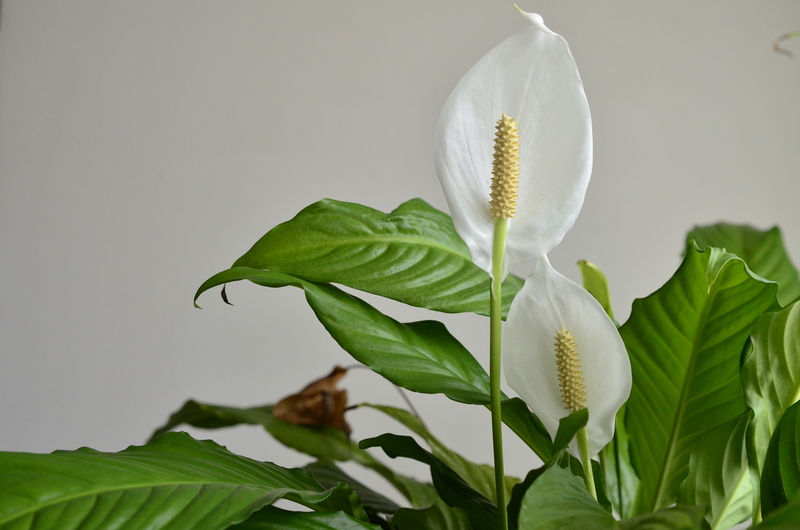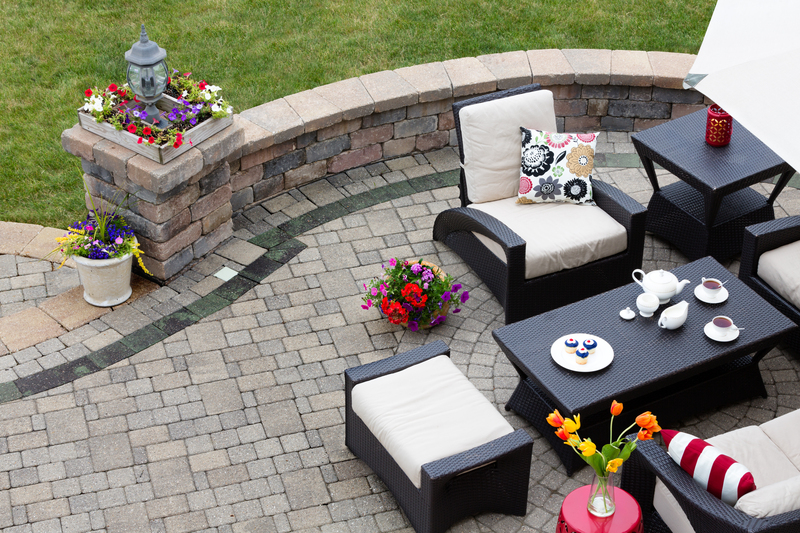Gardeners' Picks: 10 Evergreens Perfect for Compact Landscapes
Are you dreaming of a vibrant, four-season sanctuary, but working with a compact yard or limited landscape space? Evergreen plants are the ideal solution for smaller gardens, offering rich color, year-round structure, privacy, and architectural appeal. Whether you desire privacy hedges, elegant focal points, or beautiful texture, our curated list of ten best evergreen plants for small spaces is sure to inspire.
Why Choose Evergreens for Small Gardens?
Evergreens offer persistent foliage that brings life, color, and structure through every season. Their dense, often upright growth habits make them especially suited for compact spaces. Choosing the right evergreens can:
- Maximize vertical interest in narrow gardens
- Provide year-long privacy and screening
- Create beautiful backdrops for flowering perennials or annuals
- Require less maintenance than deciduous shrubs
- Enhance curb appeal in limited spaces

Top 10 Evergreens for Compact Landscapes
Below, discover our expertly selected evergreen picks for compact spaces, including dwarf conifers, broadleaf shrubs, and unique architectural plants. Each one combines restrained mature size with visual punch--perfect for patios, city plots, and small-scale gardens.
1. Dwarf Boxwood (Buxus spp.)
Qualities: Dense, slow-growing, tidy, and easy to shape
Mature Size: 1-3 feet tall/wide (variety dependent)
- Ideal for low hedges, borders, or formal knot gardens.
- Retains lush, green foliage all year with minimal pruning.
- Tolerates shade and urban pollution, making it perfect for city yards.
Gardeners have long prized boxwood as one of the best small perennial evergreens for both foundation plantings and small topiary forms.
2. Dwarf Hinoki Cypress (Chamaecyparis obtusa 'Nana Gracilis')
Qualities: Soft, fan-like foliage, rich green color, elegant form
Mature Size: 3-5 feet tall, 2-4 feet wide
- Unique texture creates focal points in tight spaces.
- Slow growth means very little pruning required.
- Performs best in moist, well-drained soil, and partial sun.
Tip: Plant near paths or patios where the intricate foliage can be appreciated up close.
3. Sky Pencil Holly (Ilex crenata 'Sky Pencil')
Qualities: Uncommon upright and columnar growth, deep green leaves
Mature Size: 4-8 feet tall, only 1-2 feet wide
- Best for ultra-narrow spots or stylish vertical accents.
- Makes a living green exclamation point in containers or tight borders.
- Suits modern and traditional landscapes alike.
Discover why this is a favorite pick among landscape designers seeking slender, space-saving evergreens for small spaces!
4. Compact Japanese Yew (Taxus cuspidata 'Nana')
Qualities: Dark green, fine needles, easy to shape, tolerant of shade
Mature Size: 2-4 feet tall and wide
- Outstanding for foundation plantings and under-window spaces.
- Very long-lived and low-maintenance shrub when established.
- Deer tend to avoid yews, adding extra value for suburban gardens.
Note: All parts are toxic if ingested; avoid if children or pets are inclined to chew on foliage.
5. Little Gem Magnolia (Magnolia grandiflora 'Little Gem')
Qualities: Glossy, evergreen leaves with rusty underside, white fragrant flowers
Mature Size: 8-12 feet tall, 4-6 feet wide
- Provides a small, flowering evergreen "tree" for mini landscapes.
- Blooms from early summer through fall--extra long season of beauty.
- Adapts to both large planters and small gardens with rich soil.
Few compact evergreens offer both elegant leaves and showy blooms like the Little Gem Magnolia.
6. Blue Star Juniper (Juniperus squamata 'Blue Star')
Qualities: Intense silvery-blue needles, mounded habit, drought tolerant
Mature Size: 1-3 feet tall, 2-4 feet wide
- Perfect for low borders, rock gardens, or small foundation beds.
- Requires minimal water once established--excellent for xeriscapes.
- Color adds year-round contrast to green-leafed neighbors.
Design Tip: Group several as a groundcover or use singly as a specimen for vibrant color impact.
7. Emerald Green Arborvitae (Thuja occidentalis 'Smaragd')
Qualities: Slim, pyramidal profile, rich green foliage, easy care
Mature Size: 8-12 feet tall, 3-4 feet wide
- Reliable space-saving screen for narrow borders or property lines.
- Stays bright green throughout winter and resists snow damage.
- Easy to shape, naturally tidy, and deer resistant.
No wonder gardeners love arborvitae as one of the best evergreens for privacy and style in small yards.
8. Dwarf Globe Spruce (Picea glauca 'Conica')
Qualities: Perfectly rounded, dense green needles, very slow growing
Mature Size: 2-4 feet tall/wide (after many years!)
- Suited for formal garden beds, containers, or as a charming focal point.
- Shapes easily into geometric forms, adding classic structure.
- Exceptionally low maintenance and cold hardy.
Design hint: Place beside paths or entryways where their neat form shines all winter.
9. Mahonia 'Soft Caress' (Mahonia eurybracteata 'Soft Caress')
Qualities: Unique, feathery evergreen leaves, yellow fragrant winter flowers
Mature Size: 3 feet tall and wide
- Offers a tropical flair for shade gardens in mild climates.
- Winter blooms feed pollinators when little else is flowering.
- No sharp spines--truly "soft" for touchable texture in borders.
Mahonia 'Soft Caress' pairs well with woodland perennials and looks magical under deciduous trees.
10. Japanese Pieris (Pieris japonica)
Qualities: Elegant tiered habit, glossy leaves, showy spring flowers, bronze new growth
Mature Size: 4-6 feet tall, 3-5 feet wide
- Provides multi-season interest in part shade gardens or as a container specimen.
- Attractive to pollinators, deer resistant, and easy to maintain.
- New growth is striking and flowers resemble lily-of-the-valley clusters.
Tip: Plant with camellias or azaleas for a classic small woodland border effect.
How to Choose the Best Evergreens for Small Spaces
Selecting the right evergreens for a compact landscape means more than just seeking out dwarf varieties. Consider these key points when planning your garden:
- Measure your space: Know the mature height & width to avoid future overcrowding
- Understand your site: Be aware of soil type, sun exposure, and wind protection needs
- Decide your garden's role: Privacy, structure, accent, or color?
- Mix shapes and foliage colors: Combine conical, rounded, and columnar forms for best effect
- Think about maintenance: Opt for slow growers to minimize pruning
Maintenance Tips for Compact Evergreens
- Water new plants well until established. Evergreens are more drought tolerant once their roots have settled.
- Mulch yearly to retain soil moisture, suppress weeds, and regulate temperature.
- Prune lightly in early spring to retain shape or control height--avoid heavy cutting, which can stress slow-growing varieties.
- Fertilize in spring with a slow-release balanced food if needed. Avoid overfeeding, as most evergreens prefer lean soils.
- Monitor for pests and diseases, especially with boxwood and yews, which can sometimes attract infestations.
Remember, the right plant in the right place will thrive with minimal intervention. Many evergreens are remarkably resilient in small garden settings!
Designing with Evergreens in Small Gardens
The best compact landscapes use evergreen plants for both structure and year-round beauty. Here are a few design strategies:
- Layer heights: Place taller vertical evergreens at garden backdrops, gradating down to mounding or globular forms near paths or patios.
- Pair with seasonal companions: Use spring bulbs, summer perennials, or fall grasses to add waves of color amid the steady green foliage.
- Mix textures and colors: Combine shiny-leafed broadleaf evergreens, feathery groundcovers, and blue- or gold-needled conifers for visual richness.
- Use containers creatively: Many dwarf evergreens thrive in pots--place them by entryways or group into lush, moveable mini-gardens on patios.
- Don't forget winter interest: Select a mix of conifers and broadleaf evergreens to keep the view beautiful even after frost.

Frequently Asked Questions about Evergreens for Small Spaces
-
Q: Can these evergreens grow in pots or planters?
A: Absolutely! Many compact evergreens, such as dwarf boxwoods, Hinoki cypress, or globe spruce, thrive in containers. Just ensure pots have good drainage, and water more often during the growing season. -
Q: How can I make a privacy screen in a small yard?
A: Choose upright, columnar evergreens like 'Sky Pencil' holly or Emerald Green arborvitae. Space according to mature width for solid coverage, or plant in staggered rows for a lush, layered screen. -
Q: Are these evergreens resistant to pests or disease?
A: Most listed here are quite hardy. However, boxwoods can be affected by blight in some regions; arborvitae might attract bagworms. Regular monitoring and good garden hygiene keep problems minimal. -
Q: Which options are best for shade?
A: Japanese yew, Mahonia 'Soft Caress', and Japanese pieris all thrive in part to full shade--perfect evergreens for compact woodland or north-facing gardens. -
Q: How often should I prune these evergreens?
A: Most slow-growing types need minimal trimming; just remove any dead or damaged branches in early spring or lightly shape as needed.
Conclusion: Transform Your Small Garden with Brilliant Evergreens
Don't let limited space restrict your gardening ambitions! With the right compact evergreen plants, you can create lasting beauty, privacy, and interest that shines all year long. Whether you seek structure, lush backdrops, vibrant color, or unique texture, one of these ten exceptional evergreens is ready to thrive in your petite garden retreat.
Now is the perfect time to select and plant your favorites from our Gardeners' Picks: 10 Evergreens Perfect for Compact Landscapes. Enjoy the constant color and style that only the best small-scale evergreens can provide!
Related reading:
```